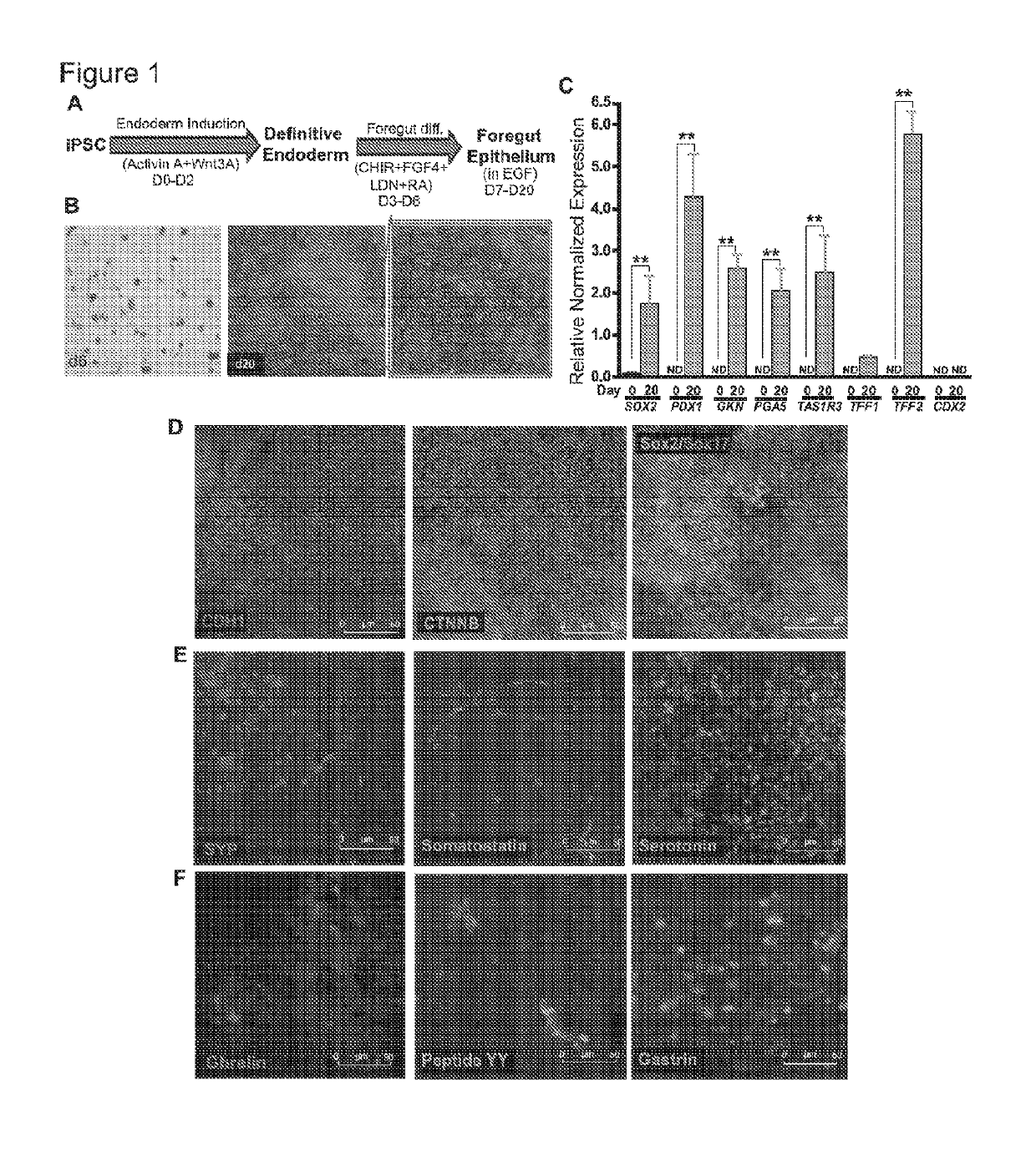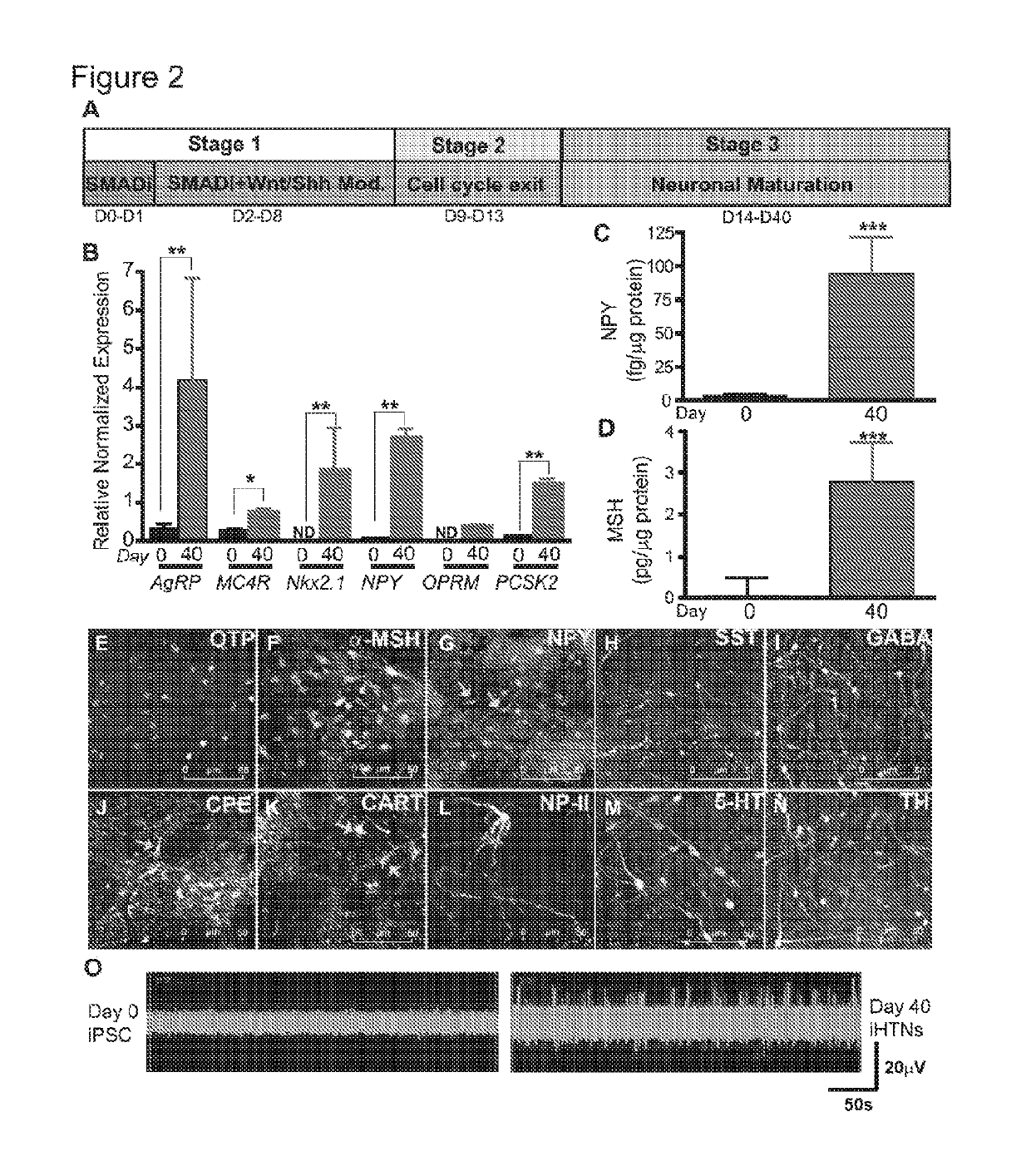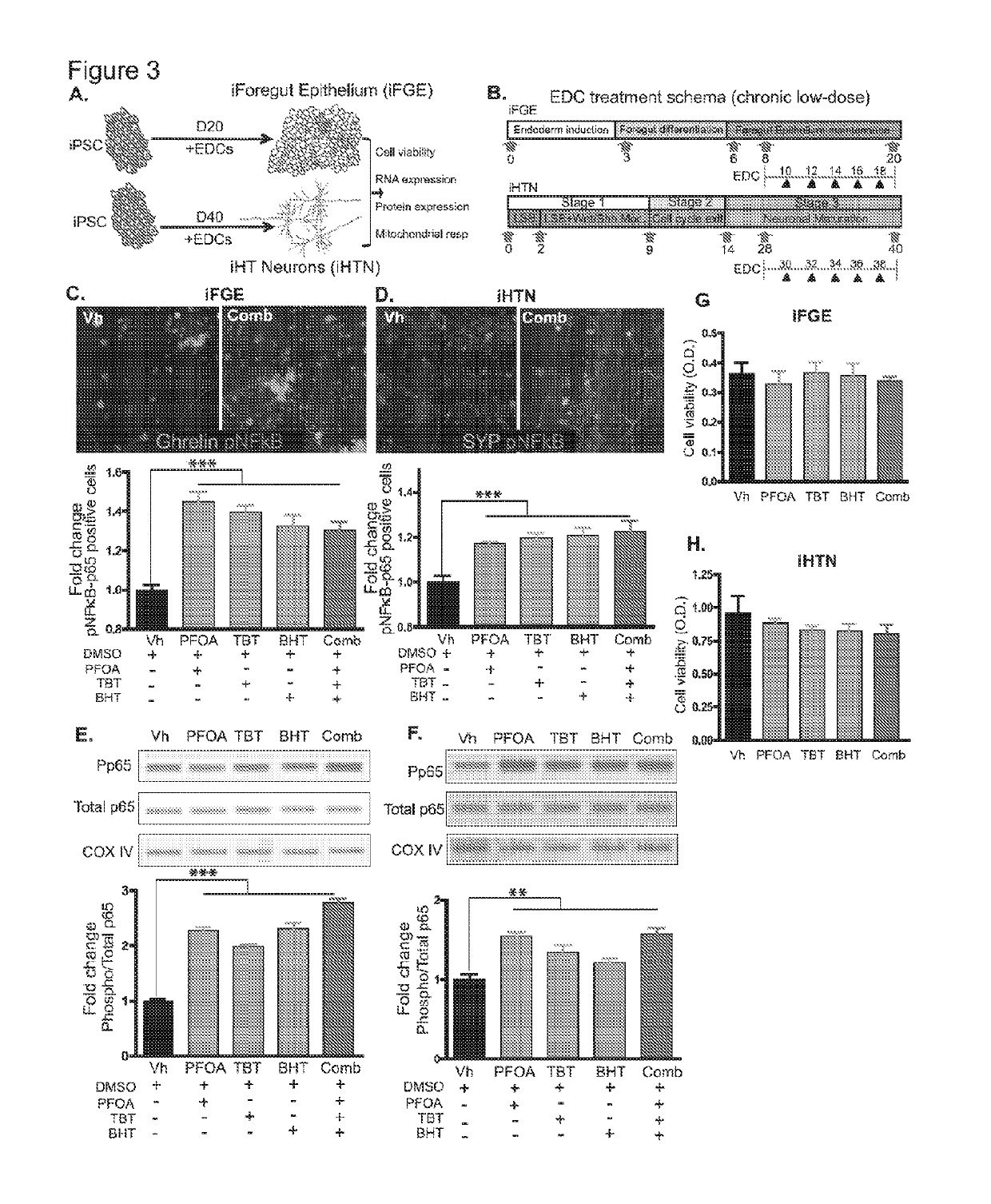Systems and methods for growth of intestinal cells in microfluidic devices
a microfluidic device and intestinal cell technology, applied in cell culture active agents, artificial cell constructs, instruments, etc., can solve the problems of deleterious and low-dose exposure to endocrine disrupting chemicals (edcs)
- Summary
- Abstract
- Description
- Claims
- Application Information
AI Technical Summary
Benefits of technology
Problems solved by technology
Method used
Image
Examples
example 1
Study Design
[0196]Described herein is the use of human induced pluripotent stem cells (hiPSCs) to elucidate the adverse effects and mechanisms of chronic low-dose EDC exposures on developing gut and hypothalamic neuropeptidergic neurons, and serves as a platform for mimicking the in utero exposure to EDCs. Such a screening platform can not only faithfully mimic a human model of development but also can provide invaluable insights on the developmental cues that could be disrupted by the compounds screened for.
example 2
Foregut Epithelium Differentiation (iFGE)
[0197]For differentiation, iPSCs were accutase-treated and plated into a 6-well Matrigel-coated dish at a density of lmillion per well in E8 medium with ROCK-inhibitor Y27632 (10 μM; Stemgent). On the next day, iPSCs were differentiated into definitive endoderm by exposing them to Activin A (100 ng / ml; R&D) and Wnt3A (25 ng / ml only on the first day; Peprotech) in RPMI 1640 (Gibco) for 3 days. During these 3 days, the cells were exposed to increasing concentrations of 0%, 0.2% and 2% defined FBS (dFBS, Hyclone). After definitive endoderm induction, the cells were directed to form foregut spheroids by culturing them for the next 3 days in Advanced DMEM / F12 medium (Gibco) containing 2% dFBS, 2 μM CHIR99021 (2 μM; Cayman), FGF4 (500 ng / ml; Peprotech), LDN (2 μM; Cayman) and retinoic Acid (2 μM; Cayman). This resulted in semi floating spheroids, which were then selectively picked and transferred on to Matrigel-coated experimental plates for furthe...
example 3
Hypothalamic Neuron Differentiation (iHTN)
[0198]For differentiation into iHTNs, iPSCs were accutase-treated and plated as single cells in 6-well Matrigel-coated plates at a density of approx. 1 million cells / well in E8 medium with ROCK-inhibitor Y27632 (10μM; Stemgent). The next day iHTN differentiation was initiated by neuroectoderm differentiation by dual SMAD inhibition using LDN193189 (1 μM, Cayman) and SB431542 (10 μM, Cayman) and this treatment is carried on for 48 hours. This was followed by Sonic hedgehog activation by Smoothened agonist SAG (1 μM, Tocris) and purmorphamine (PMN, 1 μM, Tocris) and Wnt signaling inhibition using IWR-endo (10 μM, Cayman) from Day 3 to day 8 to direct the cells towards ventral diancephalon with regular media change every 2 days. Day 9 to Day 13 the cells are slowly made to exit cell cycle using DAPT (10μM, Cayman) in the presence of ventralizing agent retinoic acid (0.1 μM, Cayman). On Day 14, the cells were accutased and replated onto Laminin-...
PUM
| Property | Measurement | Unit |
|---|---|---|
| flow rate | aaaaa | aaaaa |
| flow rates | aaaaa | aaaaa |
| flow rate | aaaaa | aaaaa |
Abstract
Description
Claims
Application Information
 Login to View More
Login to View More - R&D
- Intellectual Property
- Life Sciences
- Materials
- Tech Scout
- Unparalleled Data Quality
- Higher Quality Content
- 60% Fewer Hallucinations
Browse by: Latest US Patents, China's latest patents, Technical Efficacy Thesaurus, Application Domain, Technology Topic, Popular Technical Reports.
© 2025 PatSnap. All rights reserved.Legal|Privacy policy|Modern Slavery Act Transparency Statement|Sitemap|About US| Contact US: help@patsnap.com



